Long Blooming Perennials
Add Impact to Your Garden with Repeat Bloomers
Many gardeners like perennial flower plants because they return year after year. However, that doesn't mean that you can plant them once and forget about them. Perennials require regular maintenance to look and perform their best. Staking, pruning, deadheading, dividing and pest control are a few of the gardening chores you can expect to enjoy when growing perennials.
To get the most bang from your buck, be sure to include some long blooming and repeat blooming perennial flowers in your garden design. Large blocks of color add impact to a garden and the best way to achieve that is with long blooming perennial flowers. Here are some to consider:
Achillea (Yarrow)
USDA Zones: 2 - 9, varies by species - Bloom Span: 3+ Months
Achillea will grow almost anywhere, but it actually favors dry, lean soil. If given too much moisture or rich soil, the plants can become floppy. Deadhead spent flowers for repeat bloom. After the second bloom, rejuvenate the plant by cutting back to new growth. Yarrow tends to die out in the center of the plant and should be divided every 3 years or so.
GOOD CHOICES: Achillea 'Coronation Gold', A. millefolium 'Fire King', A. m. 'Summer Pastels'
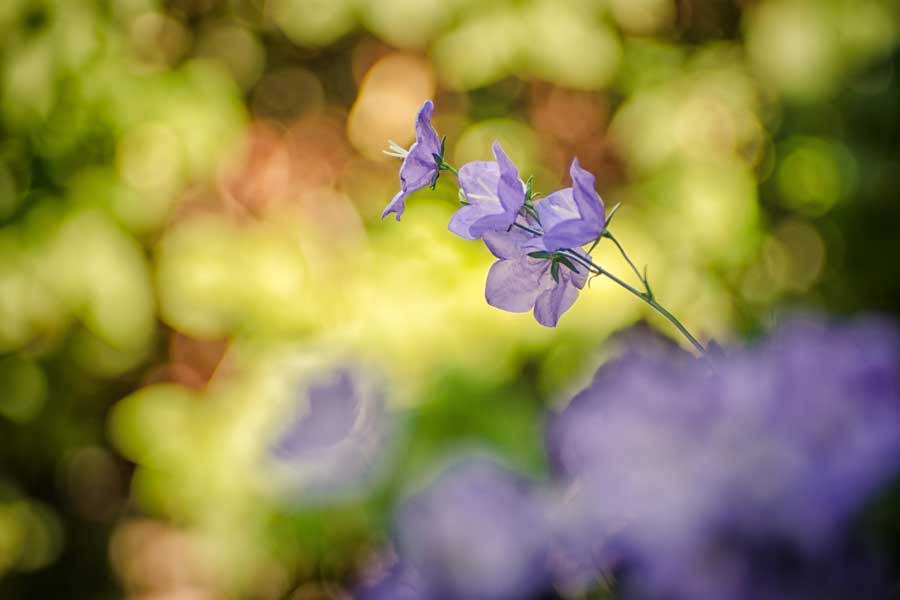
Campanula (Bellflower)
USDA Zones 4 - 9, varies by species - Bloom Span: 2+ Months
There are many species of Campanula or Bellflowers, all easy to grow and relatively long-lived. They perform best in areas with cooler summers or in partial shade where the summers are more intense. Most Bellflowers will readily self sow. If they start to look tired and ragged after several blooms, shear or mow them down to a few inches and they will grow back fresher.
GOOD CHOICES: Campanula carpatica 'Blue Clips' or 'Blue Chips', C. c. 'White Clips' or 'White Chips'
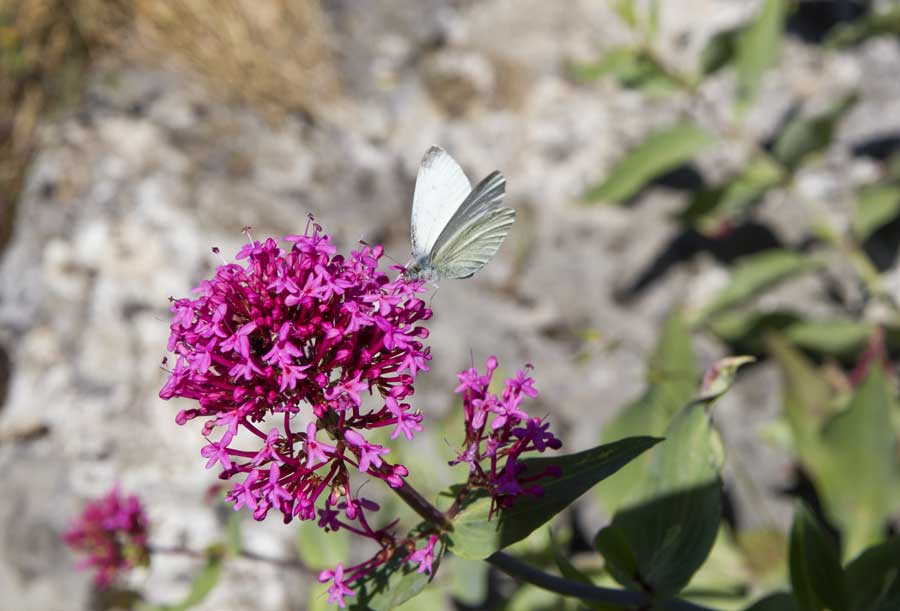
Centranthus (Red Valerian)
USDA Zones 3 - 9 - Bloom Span: 3-4 Months
Centranthus is often seen spilling over in photos of English gardens. Like Achillea, Centranthus prefers dry, lean soil, but it blooms longer in cooler climates. In intense heat, it will bloom in spring and again as it feels up to it, throughout the summer. Centranthus rarely grow true from seed and is best propagated by cuttings. To be certain of what color you are getting, buy the plant while it is in flower. The plants don't live longer than about 5 years and they resent being divided or every relocated.
GOOD CHOICES: Centranthus ruber 'Albus'
USDA Zones 3 - 9 - Bloom Span: 3+ Months
Coreopsis are undemanding plants, but short-lived. Either allow them to self-seed or divide the plants every 2-3 years and replant the newer, outer sections. Flower buds form all along the stems, making deadheading a time-consuming challenge. Once the initial buds have completed blooming, shear the plants back by 1/3 to encourage new flower buds.
GOOD CHOICES: Coreopsis verticillata 'Zagreb', C.v. 'Golden Showers', C. grandiflora 'Early Sunrise'
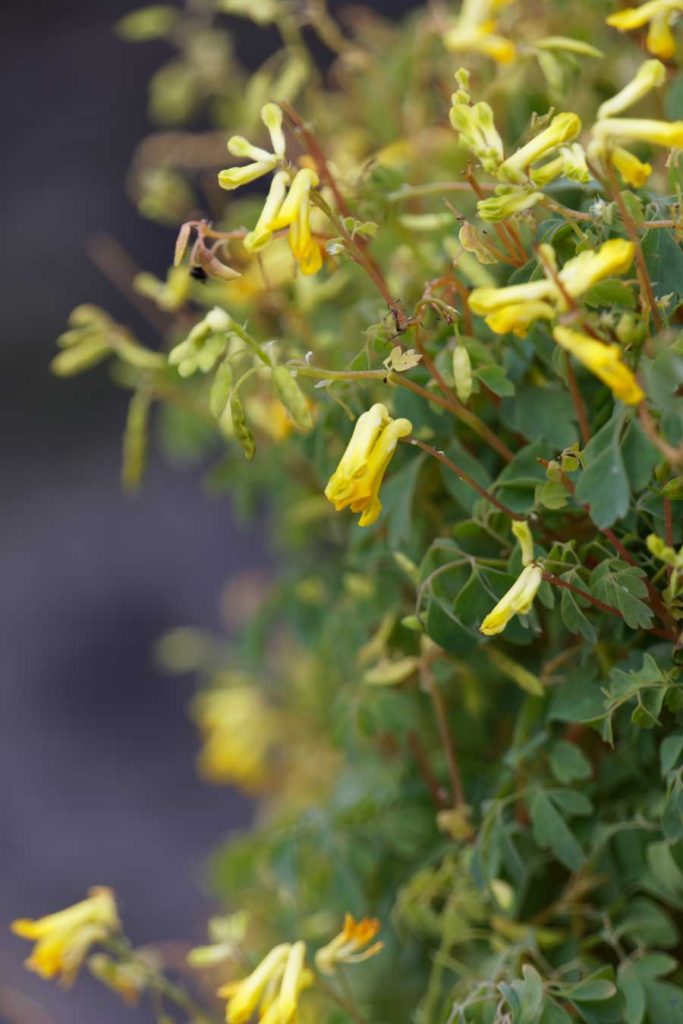
Corydalis lutea (Fumewort)
USDA Zones 4 - 9 - Bloom Span: 4 Months
Corydalis' ferny foliage and delicate flowers belie its fortitude. This is a plant that prefers partial shade and well-drained soil and will find a home in cracks in rocks, on slopes in woodlands and along paths. Once established, Corydalis self sows wherever it can. However it can take years for the seed to germinate, so trying to start your own plants can be frustrating.
GOOD CHOICES: You will probably only find the species of C. lutea
But wait, there's more...
Long blooming and repeat blooming perennial flowers form the backbone of garden design. Large blocks of color add impact to a garden and the best way to achieve that is with long blooming perennial flowers, like Achillea, Coreopsis, and Corydalis. Here are some more to consider.
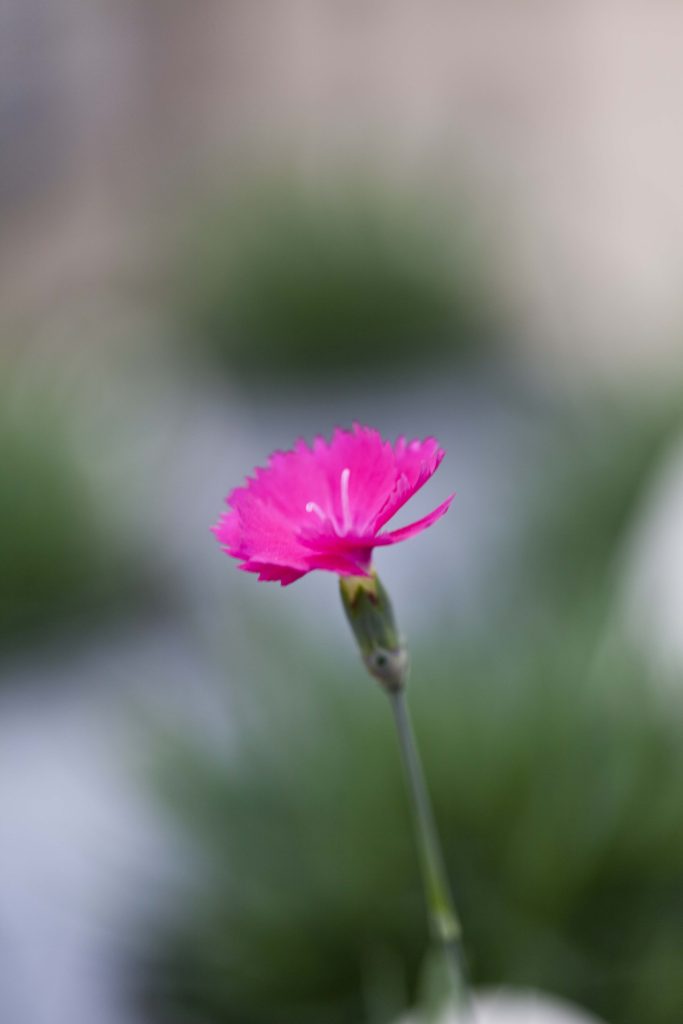
Dianthus (Pinks)
USDA Zones 3 - 9 - Bloom Span: 2+ Months
While most Dianthus have a long natural period of bloom, many will rebloom with some deadheading. Several varieties are also evergreen and make nice edging plants. Dianthus does well in any well-drained soil, though it prefers slight alkalinity. They don't tend to live very long and should be divided or seeded regularly.
GOOD CHOICES: Dianthus gratianopolitanus 'Bath's Pink', D. g. 'Cheddar Pink', D. deltoids (Maiden Pink)
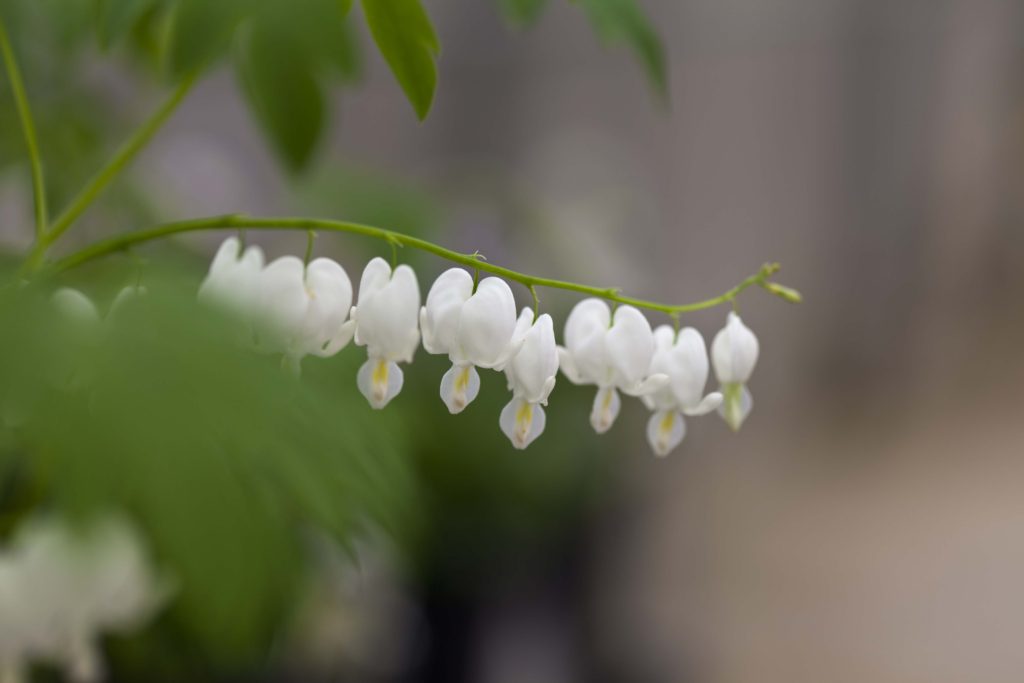
Dicentra formosa & Dicentra eximia (Fringed Bleeding Heart)
USDA Zones 2 - 9 - Bloom Span: 3+ Months
Unlike the common bleeding heart (D. spectabilis), cultivars of the fringed species will repeat bloom for most of the summer. D. formosa is a western native while D. eximia is able to handle the heat and humidity of the eastern U.S. The fringed bleeding hearts are smaller plants than D. spectabilis and the flower is not as pronounced a heart shape, but the gray-green ferny foliage and abundance of flowers make it a prize. Most self-seed.
GOOD CHOICES: 'Alba' has a pure white flower
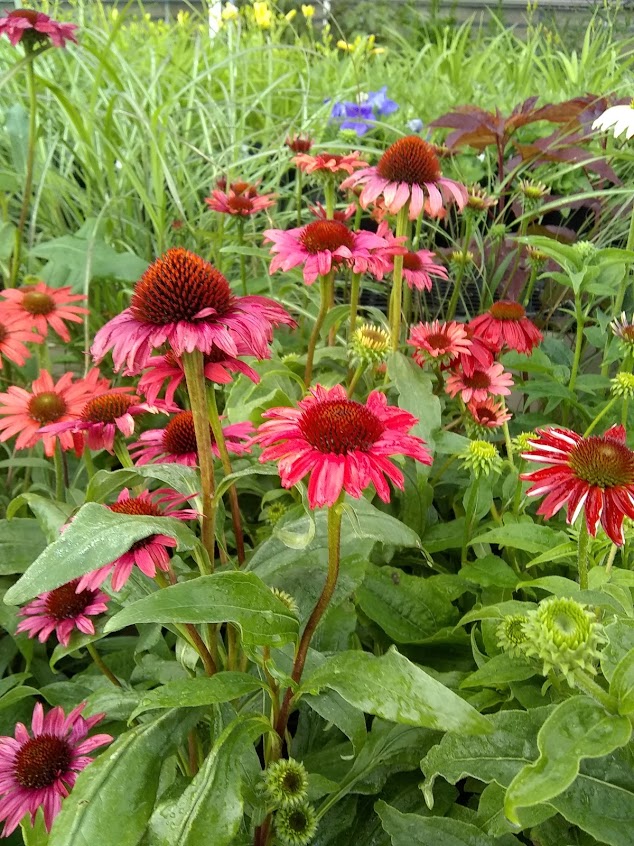
Echinacea purpurea (Coneflower)
USDA Zones 3 - 9 - Bloom Span: 2-3 Months
Having a long bloom period is just one of Echinacea's many attributes. Coneflowers are extremely drought tolerant, attract birds and butterflies and the intense color adds punch to any garden. The tall stalks are self-supporting unless they've received so much water they become floppy. They require good drainage and full sun. Deadheading will prolong the bloom period. Although Echinacea is slow to spread, a division is the best way to get the cultivar you want. The seed heads can be left on through the winter and will provide a treat for neighborhood birds.
GOOD CHOICES: Echinacea purpurea 'Magnus", E.p. 'Fragrant Angel', E. "Art's Pride'
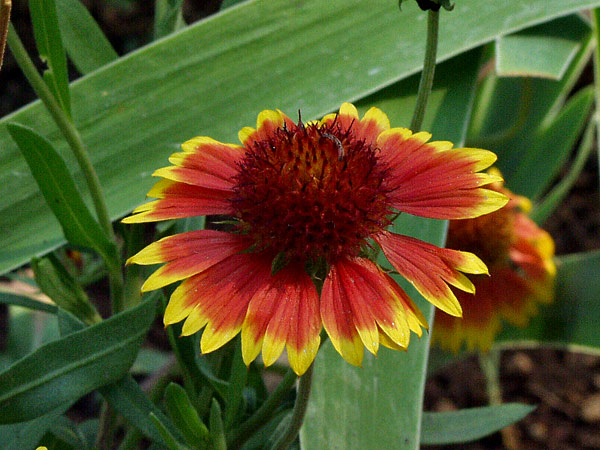
Gaillardia × grandiflora 'Goblin'
Gaillardia (Blanket Flower)
USDA Zones 2 - 9 - Bloom Span: 3-4 Months
Daisies on caffeine. Gaillardia's yellow petals around a burgundy center are impossible to ignore in a garden. All they ask is full sun and they will keep on blooming all summer. Too much shade and the stems begin to flop. In most cases, deadheading is not necessary for continual bloom, but it can make the plants look tidier. Gaillardia is another short-lived perennial and should be divided or seeded often.
GOOD CHOICES: Gaillardia x grandiflora, Gaillardia 'Goblin' (dwarf), G. 'Burgundy', G. 'Monarch'
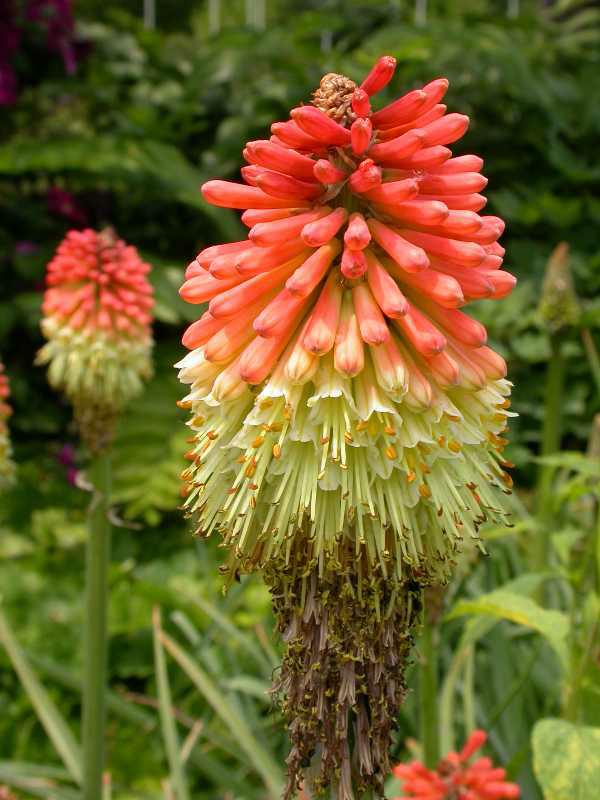
Photo Courtesy of Missouri botanical garden
Kniphofia (Red Hot Poker)
USDA Zones: 5 - 9 - Bloom Span: 3+ Months
The spiky, bottle-brush flowers of Kniphofia are beacons for hummingbirds. Although they look like tough customers, Kniphofia actually requires a bit of winter protection in cooler zones. They are also a bit fussy about liking moist conditions in the summer, but well-drained soil for the winter months. Full sun is generally necessary for ample blooms. Kniphofia does not divide or transplant well, although you can usually get away with removing and replanting the young side shoots of the plants.
GOOD CHOICES: Any of the hybrids. Kniphofia ''Primrose Beauty' is especially hardy.
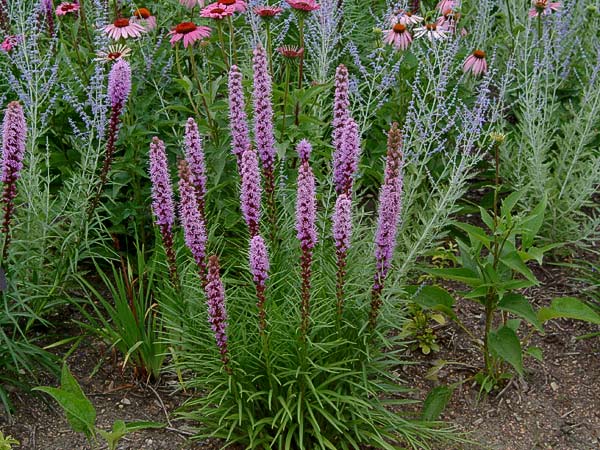
Liatris spicata 'Kobold'
Liatris (Gayfeather, Blazing Star)
USDA Zones 3 - 9 - Bloom Span: 3 Months
Liatris are easy to grow and texturally unusual. The thin, spiky leaves jut off the stems all the way to where the rosy-purple flower spikes begin. Unlike most spiky flowers, Liatris blooms from the top down. Liatris can handle just about any type of soil, but the richer the soil, the more likely they'll need staking. They'll grow in full sun or partial shade. Liatris is long-lived and doesn't often require division. They will self-seed, but generally, don't take over.
GOOD CHOICES: Liatris spicata (Spike Gayfeather) comes in white, pink and shades of purple
For still more choices...
All perennials were not created equal. Some wonderful plants go above and beyond the call of duty, blooming for months, if not the whole summer and asking very little in return. These plants should be the backbone of your garden. When you have blocks of color you can count on, you have time to pamper that special prima donna you just couldn't resist at the garden center. Here are some more tried and true long blooming performers for your garden.
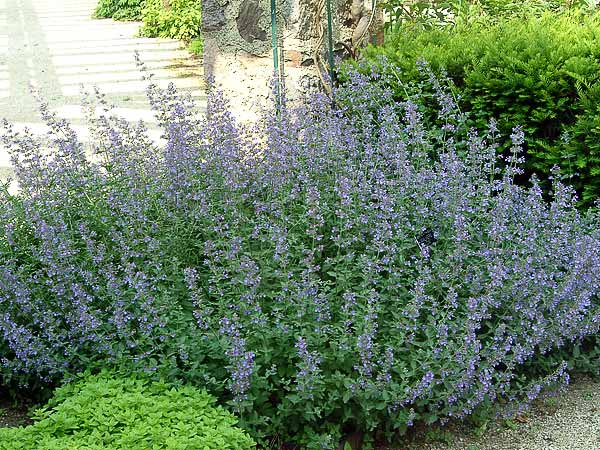
Nepeta racemosa 'Walker's Low'
Nepeta (Catmint)
USDA Zones 3 - 9 - Bloom Span: 2-3 Months
Most people think of Nepeta as catnip (Nepeta cataria), a somewhat weedy garden plant. But there are many excellent ornamental Nepetas that will bloom throughout the summer if deadheaded. Most have some shade of blue-lavender flowers and gray foliage. They are very drought tolerant and make a nice substitute for lavender, in areas where lavender won't thrive. Although not as attractive to cats as catnip, you may still find a cat or two rolling around in your plants.
GOOD CHOICES: Nepeta 'Six Hills Giant', Nepeta x faassenii 'Dropmore' (Sterile and doesn't need deadheading)
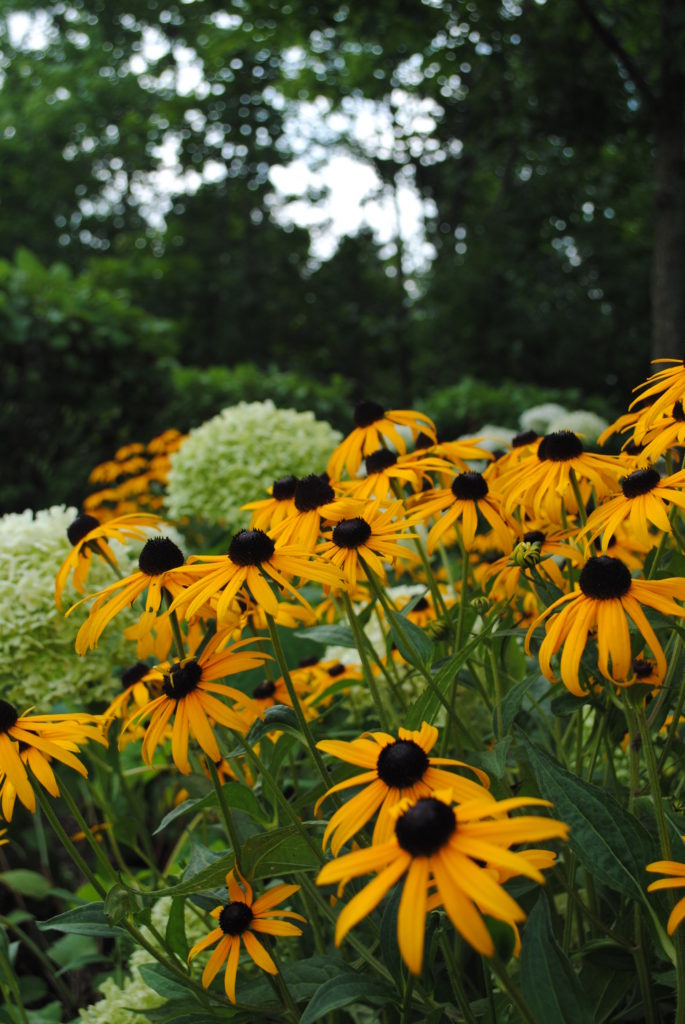
Rudbeckia fulgida
Rudbeckia (Black-eyed Susan)
USDA Zones: 3 - 9 - Bloom Span: 3 Months
Rudbeckia is at home everywhere and many are native to various parts of North America. They prefer well-drained, somewhat lean soil and full sun. Deadheading will prolong bloom and cut Rudbeckia flowers will last a long time in the water. With their flat landing pad petals, they are attractive to butterflies and the seeds will be eaten by the birds during the winter. Relatively long-lived, Rudbeckias can be easily multiplied by division.
GOOD CHOICES: Rudbeckia fulgida 'Goldsturm"
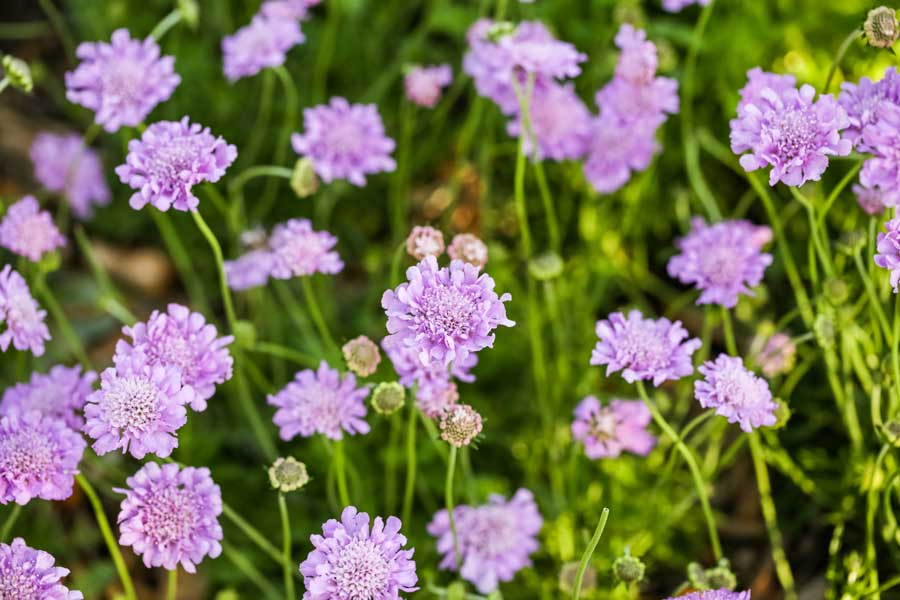
Scabiosa (Pin Cushion Flower)
USDA Zones 3 - 9 - Bloom Span: 3+ Months
Scabiosa is a unique looking plant with a low growing rosette of narrow leaves and a profusion of gangly stems topped by pincushion flowers. They are relatively easily grown in average soil and full sun. Deadheading is a must for long bloom and general appearance. Divide plants every 3-4 years. You can also root the secondary stems you will see coming from the base of the plants.
GOOD CHOICES: Scabiosa caucasica 'Butterfly Blue', S. c. 'Pink Mist'
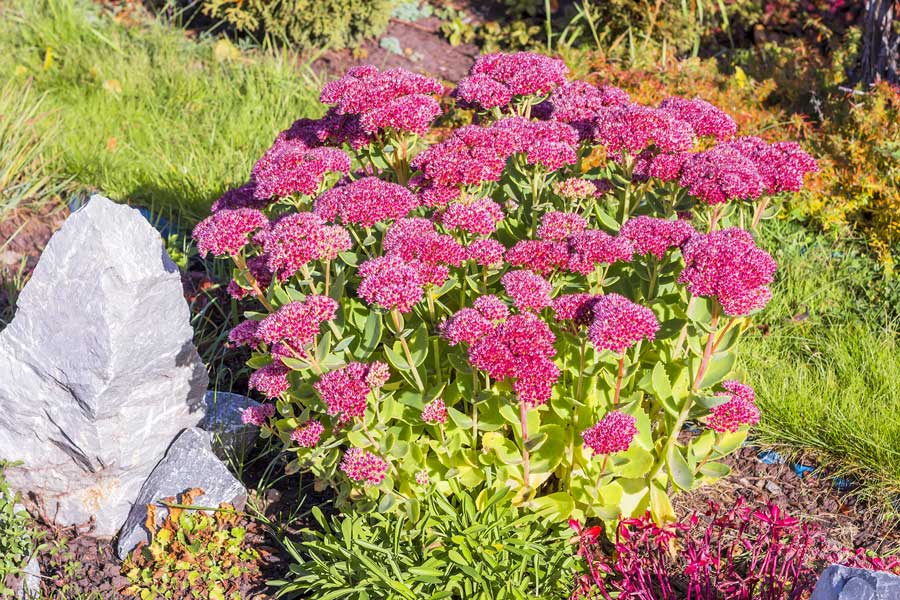
Sedum (Stonecrop)
USDA Zones 3- 9 - Bloom Span: 2-3 Months
The taller sedums are unparalleled garden performers. Sedum 'Autumn Joy' is a near perfect plant, looking good for 4 seasons. Sedum flower buds are attractive long before they are fully in bloom and long after they have gone to seed, so there is no need to deadhead. They thrive in well-drained soil and full sun. If your plants tend to flop, they can be sheared back in early summer to form a bushier, sturdier plant. Sedums can go years without division but can be propagated by stem cutting. Once the plant begins to thin out in the center, a division is necessary.
GOOD CHOICES: Sedum 'Autumn Joy', S. 'Bertram Anderson', S. Madrona, S. 'Brilliant'
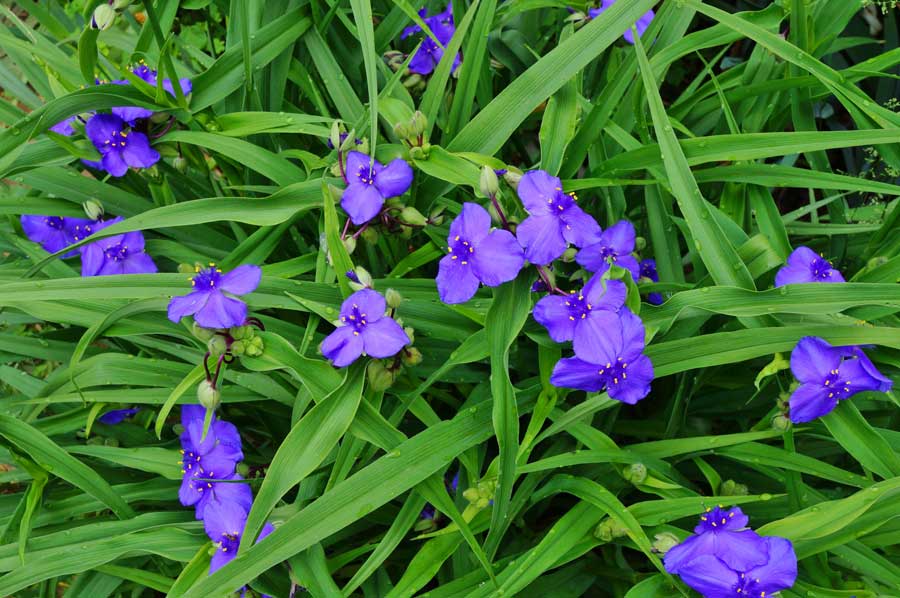
Tradescantia (Spiderwort)
USDA zones 4 - 9 - Bloom Span: 3-4 Months
Tradescantia doesn't get much respect, probably because they can become a bit aggressive. However, they will readily bloom in partial shade and can be easily controlled by pulling young plants or by crowding them in with other plants. They have somewhat grassy like leaves with clusters of 3-petaled flower heads. Each flower lasts only one day, but there are so many buds the bloom period is quite long. They prefer cool, moist soil and full sun, but will accept partial shade in exchange for the cool soil.
GOOD CHOICES: Tradescantia ''Carmine Glow', T. 'Snowcap'
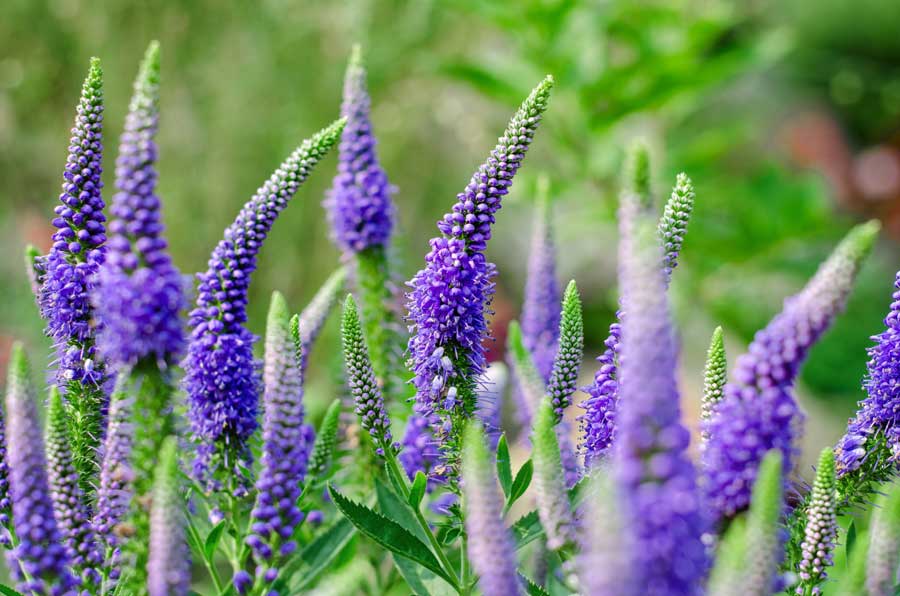
Veronica spicata (Spike Speedwell)
USDA Zones 3 - 9 - Bloom Span: 3-4 Months
Veronicas start blooming in the spring and keep going through frost. The genus includes a broad range of plants, but V. spicata is most popular in gardens. The low growing dense foliage gives rise to narrow flowers spikes in blues, reds, pinks, whites, and purples. Deadheading will keep them going all summer long. Drought tolerant, Veronica likes well-drained soil.
GOOD CHOICES: Veronica 'Sunny Border Blue'
Marie Iannotti
More Resources-
https://www.thespruce.com/long-blooming-perennials-2131857
Want to learn more about landscape design & installation faq?
Let our experienced team assist you with your holiday decorating and create a custom look for your home and landscape.
Call Breezy Hill Nursery at 262-537-2111.
NOTE: Any of our sales associates here at Breezy Hill Nursery would be happy to answer your questions about planting and caring for your tree. Call us at (262) 537-2111.
Do you have Gardening questions? Please call or stop by our garden center.
You might also enjoy this post about common landscaping questions or this post about Cut Flower Gardening.
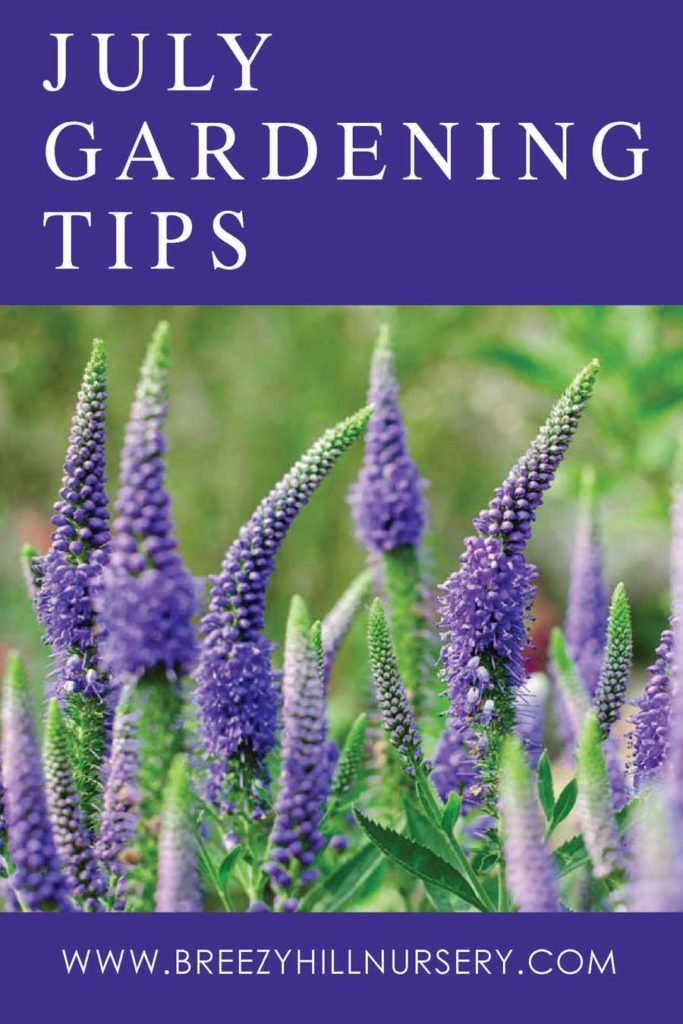

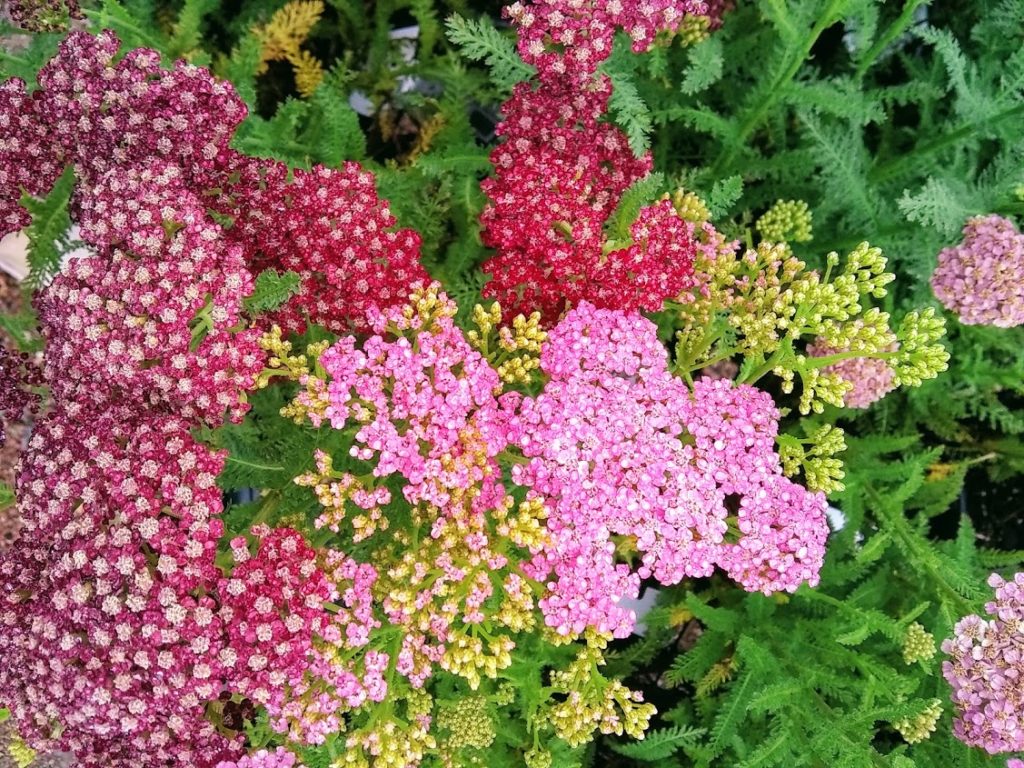
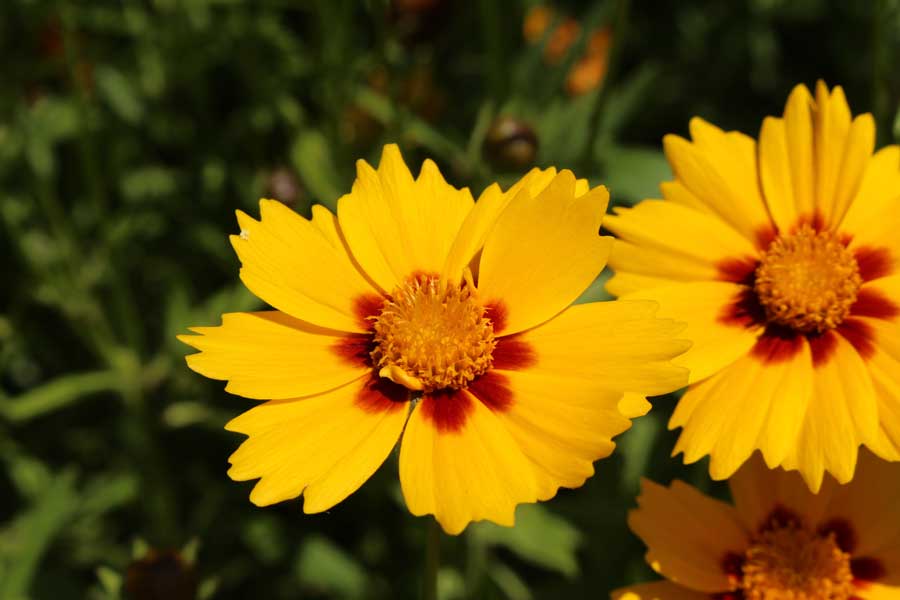
Comments are closed.